How to waterproof a second floor balcony? Waterproofing fails most often in two spots where water doesn’t belong: bathrooms and balconies. These costly issues can turn a home into a soggy nightmare. Balconies are especially tricky to the best waterproofing solution because there’s no margin for error: one wrong step and you might find yourself replacing an entire surface.
For tile users, the stakes are even higher as the drying process must be done precisely the first time around.
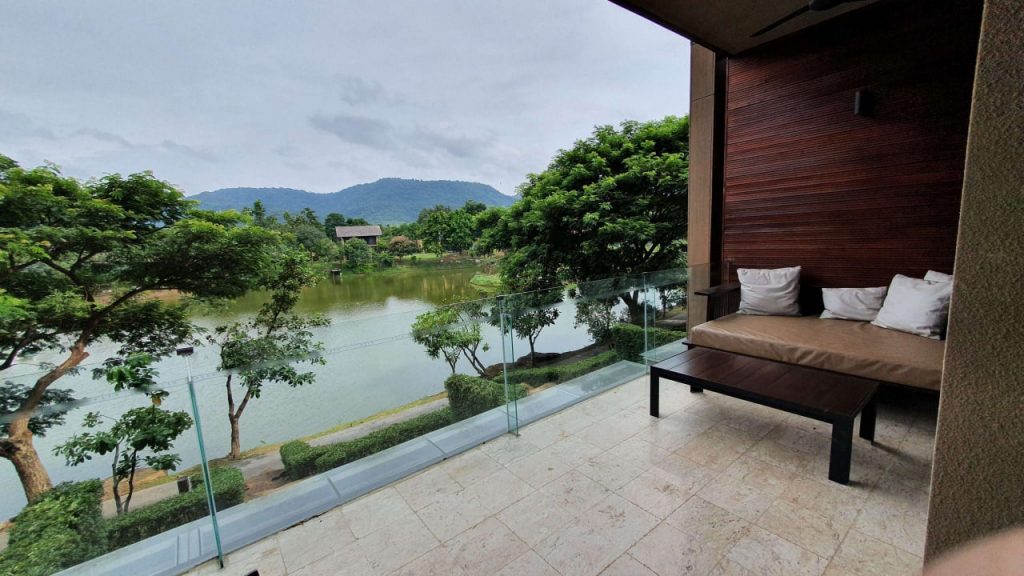
Imagine sipping your morning coffee while watching the sunrise from the comfort of your very own rooftop terrace. These outdoor oases are becoming increasingly popular, especially on top of city apartments or as add-ons to living areas.
But before you start planning your next rooftop soirée, it’s important to note that sealing the walls and waterproofing the surface is no simple feat. It takes a lot of time and effort to ensure your rooftop retreat stays safe and dry.
When it comes to protecting your balcony or terrace, it’s not as simple as slapping on any old waterproofing system. You need to carefully assess the situation to determine the best fit for your specific needs. Whether you’re starting from scratch or making modifications to an existing structure, choosing the right waterproofing system is key to keeping your space dry and damage-free.
So, don’t take any chances – make sure you have the expertise to pick the perfect system for your unique circumstances.
Don’t let a flawed balcony ruin your day. To prevent water damage and other issues, every aspect of the repair process must be handled with utmost precision.
Luckily, Hitch Property Constructions offers a wide range of services to fix your balcony and keep it in top shape. So why wait? Say goodbye to worries and enjoy a flawless balcony experience.
Steps to waterproof a balcony or a terrace
- Before using waterproofing solutions to a window door, balcony or terrace, it’s important to assess whether a new application is necessary or if the current system just needs a little restoration. By determining this, we can pinpoint exactly when our waterproofing expertise is needed and ensure a successful project.
- Installing a waterproofing system can be a breeze, but if reconstruction is necessary, a thorough assessment must be done. On the other hand, if you choose the latter approach, a less invasive method may be possible. Don’t forget to get rid of any unsightly efflorescence, buildup, or outdated wax treatments before using a mild detergent to scrub off any remaining dirt.
- After the terrace grouting has dried, a magical transformation can occur with the application of impermeable outdoor putty. This incredible substance rebuilds the finishing layer, allowing the entire package to be restored to its former glory. But wait, there’s more! The treatments involved utilize film-free, see-through products, showcasing the beauty of your outdoor space without any distractions. So step into your backyard oasis and enjoy the stunning transformation.
- With these nifty tools at hand, you can ensure that even the most problematic areas of finished floor, like pesky joints, are fully waterproof, and no water seeps through to spoil your balcony or terrace fun. You’ll have peace of mind and a restored top layer to enjoy, all thanks to these special items.
- When it comes to restoring a terrace’s waterproofing system, things can get pretty tricky. If you notice water seeping through the finishing layer, you’ll need to take action ASAP. The solution? We have to go back to the drawing board and come up with a different plan. First off, we’ll have to carefully remove the damaged flooring, the adhesive, the paint roller and the liquid waterproofing coating that was supposed to protect the screen. It may sound like a daunting task, but with a little bit of patience and perseverance, we can get your terrace looking and feeling as good as new again.
- To protect the screed from water damage, we’ll be applying a special liquid solution that’s designed for outdoor use completely remove it. Once that’s done, we’ll use a special glue that’s tailored to the type of substrate we’re working with to bond a new coating onto the surface. And to finish it all off, we’ll use specifically designed outdoor grout to fill in any remaining gaps and complete the project. No more worries about water damage!
An essential part of the building works
Shielding your balcony from the elements is of utmost importance to safeguard any underlying spaces from getting drenched. Lack of waterproofing can cause water to seep through the existing flooring, which can lead to permanent structural damage.
This is particularly vital in areas that receive plenty of precipitation like rain or snow. Pouring resources into waterproofing during the construction phase can protect your property from irreversible destruction. Don’t miss out on this essential step in the construction process.

Discovering the Achilles’ heel of building envelopes, a recent statistical analysis has brought to light the not-so-waterproof “Balcony Waterproofing” component. It seems to be the weak spot that needs immediate attention to prevent further failures.
Balcony sections are notorious for causing headaches and grumbles among building occupants, with an overwhelming 83% of quality complaints related specifically to this area. It’s surprising to learn that a mere 1.8% of the apartment buildings total construction cost could potentially solve this issue by waterproofing the balcony. It seems like a small investment that could make a significant impact on overall customer satisfaction.
Imagine yourself lounging on your flat roof balcony, admiring the view below. It’s a perfect day, the sun is shining, and you are at peace. But what if suddenly you feel a drop of water on your face? You look up and see a puddle forming on your balcony floor.
You realize the waterproofing material wasn’t applied correctly, and now you have a serious problem on your hands. To avoid this nightmare scenario, careful planning and correct application of waterproofing material is key. Especially for flat roof balconies, balconies above rooms and terraces, where a single mistake can wreak havoc. So, take your time and don’t rush the process – it’s worth it in the long run.
Keeping a balcony safe from water
Looking to protect your balcony from pesky water damage? There’s no shortage of options and inventive materials to help you out. While concrete and wood decking are standard choices for the underlying waterproof layer, newer watertight materials are making a splash in the construction world.
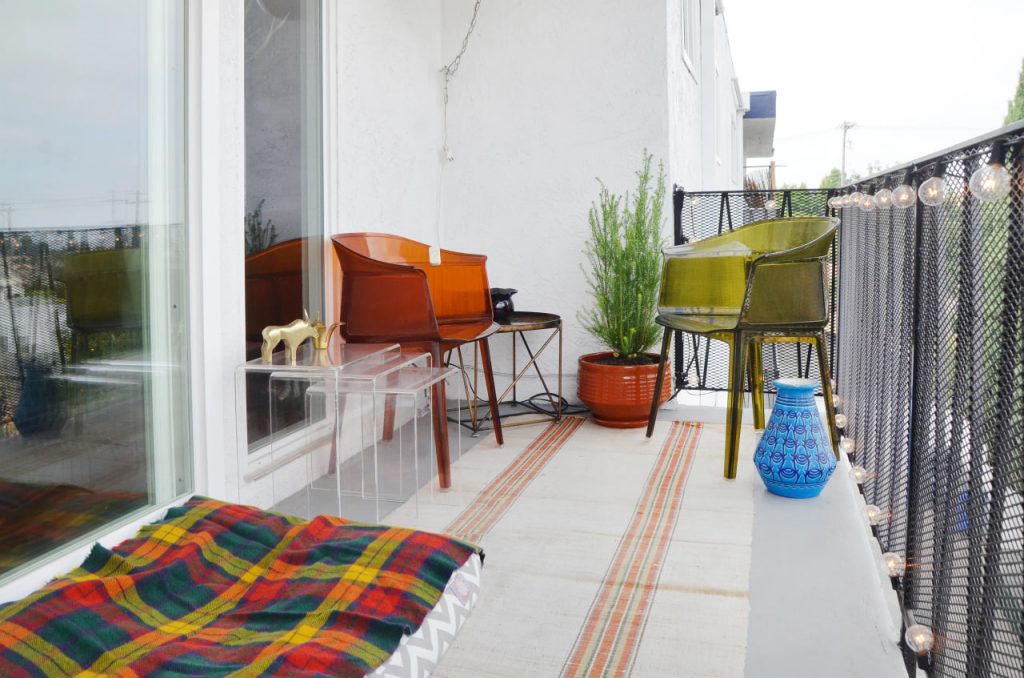
But be careful to choose the right system – construction with lumber or steel can come with its own set of challenges that might not apply to concrete. And if waterproofing isn’t done correctly, you could find yourself dealing with frequent repairs, repair costs and major frustration.
Have you ever noticed those unsightly white deposits on the edges and undersides of brickwork? That’s efflorescence, and it only forms when there’s moisture present.
The secret to avoiding it is choosing the right material, one that bonds well with the other materials, creates a solid seal, and can expand and contract just like its surroundings. Don’t let efflorescence ruin the look of your brickwork – choose the right material to keep it at bay.
The correct sequence of works
Before waterproofing your balcony, make sure any necessary repairs and installations are completed. Don’t forget about the railing – it’ll likely need sturdy baluster posts attached to the building’s framework. Also, make sure the waterproofing material can bend around the posts and stay securely attached to the balustrade, or you might end up with a leak. Don’t let any brittle materials ruin your balcony bliss!
Looking to connect two different materials together? You’ll need a top-notch polyurethane sealant to get the job done right. Say hello to polyurethane-based sealants like Sika flex 11FC! No matter what kind of weather your project will face, these sealants have your back.
With their incredible bonding strength and ability to bond with a variety of materials (like stone, steel, glass, rubber, and more), you can trust that they will stand up to the test of time. Plus, their resistance to UV light and extreme temperatures makes them a top choice for any project.
Water penetration can be a major headache when attaching anything to your roof, but fear not! By using the right components and keeping an eye on the weather, you can prevent any unwanted leaks and keep your home dry and cozy.
So, whether you’re adding a satellite dish or installing a skylight, make sure you take the necessary precautions to protect your roof avoid leaks and keep the elements out.
What to do before waterproofing a balcony or a terrace
Before waterproofing a balcony or patio, it’s important to assess its current condition to determine the best waterproofing solution.
Whether you need a complete restoration or a new waterproofing system, the process can vary in complexity depending on existing situation and on the level of maintenance required. By evaluating the area first, you can ensure the most effective and least invasive approach to a leak-free outdoor oasis.

Discovering the hidden secrets of a floor’s current condition can be like uncovering buried treasure. By starting with the visible layer, we can sleuth out clues to help us determine its preservation status. A careful inspection may reveal tell-tale signs, such as variations in joint volumes or outright voids, which could hint at water damage.
After all, even the best of waterproofing systems is no match for sneaky water leaks that can seep in through vulnerable seams. So roll up your sleeves and get ready to dig deep, because the truth is just waiting to be uncovered!
As the water seeps in to fill cracks and slowly eats away at the entire pack, the devastating effects are sure to be felt throughout. And it’s not just the pack that’s at risk – even flooring components made for damp surroundings may start to lose their integrity over time.
Cracks or breaks in the surface of wall floor corners become potential infiltration points, giving water an unwanted pathway into spaces it shouldn’t be. It’s a race against the clock to stay one step ahead of the water’s relentless march.
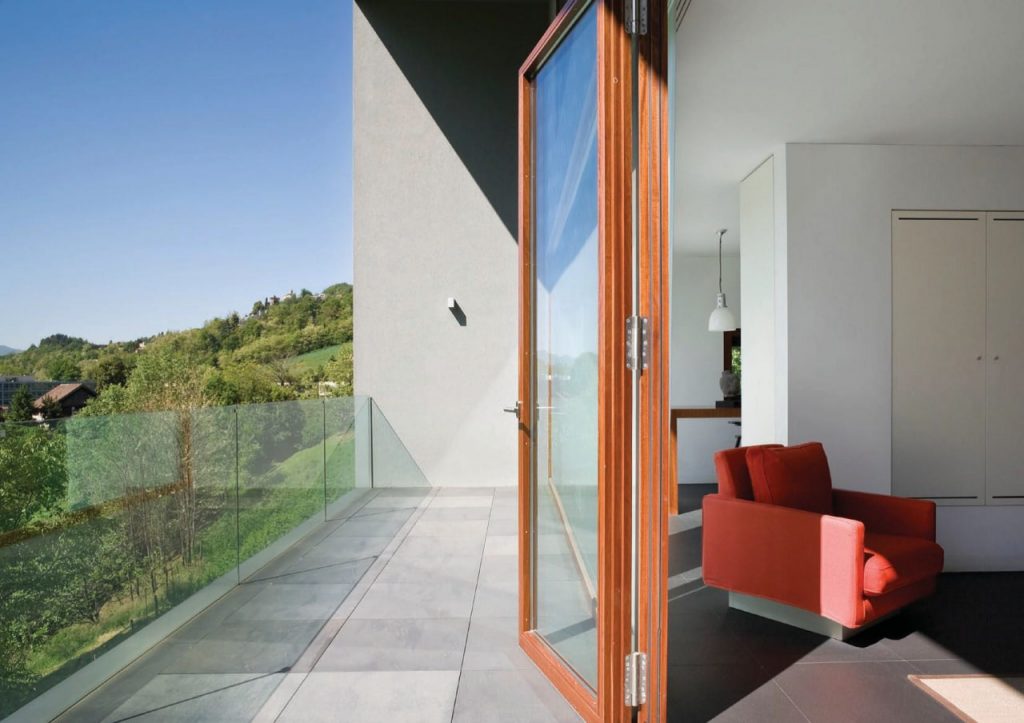
Multipanel waterproof balcony system
MULTIPANEL’s groundbreaking high-density polyurethane composite construction panel is the first of its kind on the market and is therefore perfectly suited to the task of waterproofing balconies. The panel was produced by MULTIPANEL, a company.
100% WATERPROOF
No matter how many options you have for water-resistant panels, there’s only one that guarantees a completely dry project: a liquid waterproof membrane. Lucky for you, MULTIPANEL has got you covered – literally. Its waterproof capabilities make it the ultimate protector against dampness, and stagnant water, so you can rest assured that your property will stay safe and dry.
SUPER LIGHTWEIGHT
Imagine a building material that is not only incredibly durable, but also lightweight enough to be carried by just one person. That’s the power of MULTIPANEL! In some instances, this revolutionary product can weigh up to 80% less than traditional materials. Just picture a 30mm sheet tipping the scales at a mere 18 kg – that’s only 6.25 kilogrammes per square metre! With MULTIPANEL, you can get the job done efficiently without sacrificing quality.
LABOUR SAVING
Assembling MULTIPANEL just got a whole lot easier with its unique tongue and groove pattern featured on each panel edge. But that’s not all – even without using a second layer of liquid membrane, this balcony system can be pieced together up to 75% faster than its competitors, all while remaining incredibly light-weight. Who knew skipping on liquid could actually make things move faster?
ECO FRIENDLY
EcoSpecifier has conducted research that showcases the positive impact of MULTIPANEL on our environment. This revolutionary product not only provides substantial insulation benefits, but it also results in impressive cost savings over the lifetime of any project.
Scraps of MULTIPANEL are not thrown away, but rather used to create a joint that is even stronger than the original panel. Thanks to the innovative MULTIPANEL Polyurethane adhesive, no materials are wasted during the process. In addition, MULTIPANEL can be easily joined off a floor joist, significantly reducing the amount of materials needed. With MULTIPANEL, you can feel good about both the significant benefits and its minimal impact on the environment.
WHERE IS IT USED?
Say goodbye to traditional deck and even balcony flooring substrates! A revolutionary new material has arrived that can seamlessly replace particleboard, plywood or compressed fibre cement. Transform your residential outdoor spaces with ease and worry less about maintenance and upkeep.
Balcony waterproofing
To keep your balcony wall from turning into an aquatic disaster, it’s important to give it a solid base. This foundation will vary depending on the waterproofing system you choose, but it needs to be smooth and sturdy enough to support stylish tiling without any extra waterproofing steps. Keep the leaks at bay and elevate your outdoor space with your wall finishes and a rock-solid foundation.
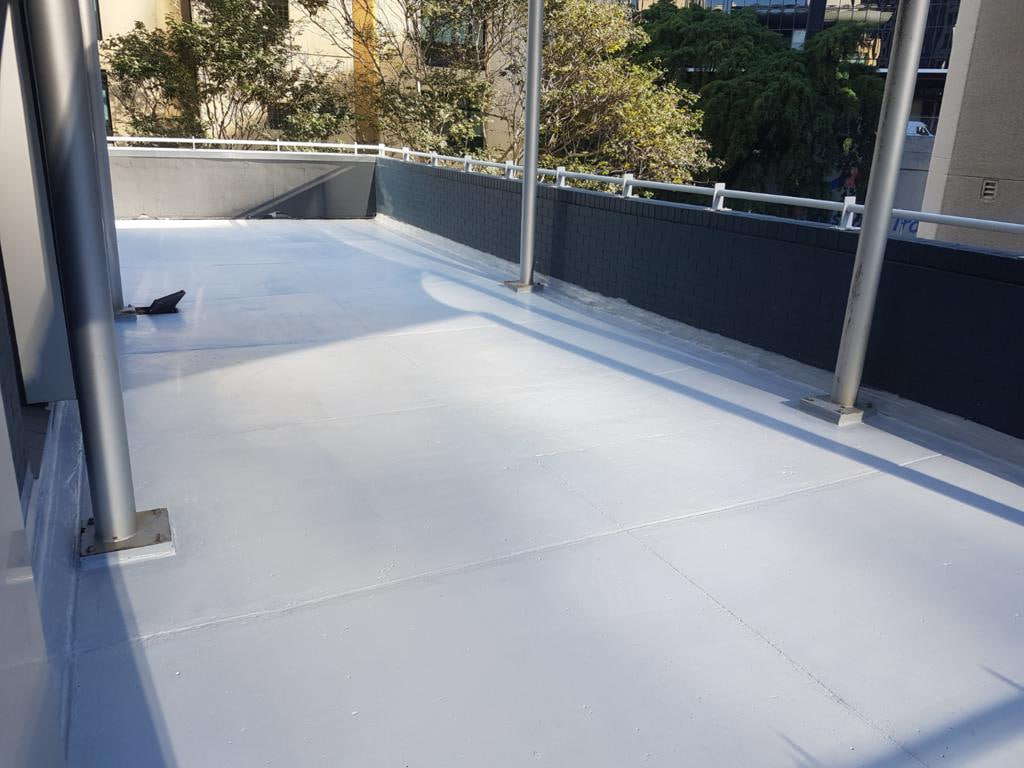
The Waterproofers have a special request for balcony surface maintenance that adds a touch of suspense to their waterproofing process. They ask all balcony owners to hold off on using silicone or polyurethane on the surface until they arrive to apply their magic waterproof coating. As for balcony floors and leak control flanges, they tend to have silicone applied and edges sealed frequently, proving their importance in the waterproofing game.
Possible output:
Attention, tradespeople! We have a minor challenge to overcome before we can excel at our tasks and impress our clients. You see, there is a silicone sealant that can interfere with some of our systems, causing glitches and malfunctions. To avoid this, we need your cooperation in sealing off any water entry points at the job site. We trust that you will do this to the best of your ability, as we value your expertise and dedication.
However, we also acknowledge that sometimes these measures may limit our options and hinder our creativity. Yet, fear not, for we are resourceful and resilient. We will work together to find a solution that not only satisfies the client but also showcases our skills and professionalism. So, let’s seal the deal and seal the site, and unleash our full potential!
Make your balcony waterproof and worry-free with our wide range of top-quality product lines. Our team of experts will help you choose the right system for your project, considering all the benefits and factors that will best fit your needs.
Don’t let water damage ruin your balcony’s beauty and functionality. And with our products, you can rest easy knowing that your balcony is well protected. Plus, we always advise against using torch-on bitumen membranes for your peace of mind and safety. Let us help you achieve a waterproof balcony today!
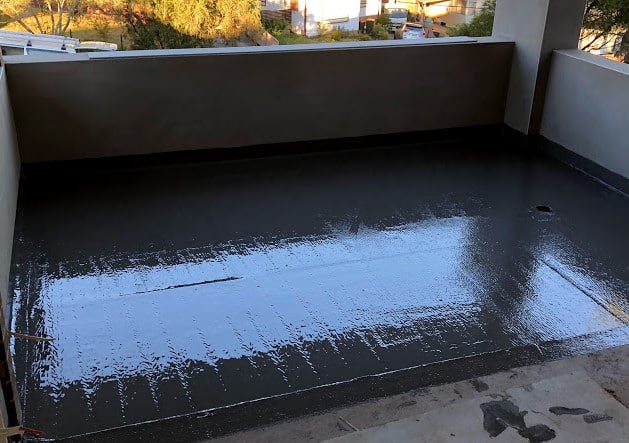
As temperatures rise, our roadways face a tough battle to keep up with the additional pressure brought on by vehicles. Despite being part of a resilient “trafficable” membrane system, the layer beneath the pavement can still suffer damage due to the harsh conditions.
When bitumen softens, it becomes more susceptible to wear and tear, making it easier for tiny pieces to stick to our shoes and follow us indoors – potentially ruining carpets and floors. So, next time you step out on a sunny day, spare a thought for the hard-working roadways below.
Butyl rubber waterproofing
Looking for a reliable solution to waterproof your balcony? Look no further than butyl rubber. This versatile membrane is perfect for the job – it can be laid beneath a screed or directly underneath most surface treatments. The best part?
Butyl rubber waterproofing can be applied to almost any surface, including concrete, plywood, and cement sheet. And if that wasn’t enough, an epoxy primer can be applied to drainage membrane beforehand for added protection. Say goodbye to leaks and hello to a waterproof balcony with butyl rubber.
Have you ever wondered how builders keep water out of a building’s foundation? You may be surprised to learn that even if butyl rubber is used to keep the foundation waterproof, additional measures are needed to prevent unwanted moisture from damaging the screed.
After the screed dries, a separate waterproofing membrane must be added to keep efflorescence and moisture from seeping through. There are a variety of options for this extra waterproofing layer, including additional butyl rubber or one of the many seamless liquid membranes available on the market today. Ensuring proper waterproofing can be a crucial step to maintaining the longevity and health of a building’s foundation.
When it comes to using butyl rubber for new construction though, there’s a crucial step that needs to be taken before adding any finishing touches or fixtures. This involves coating and gluing the rubber to the building framework or masonry, which ensures a solid foundation for the entire structure.
But why is this so important? Well, in New Zealand, there’s been a major issue with leaky buildings – a problem known as “leaky building syndrome.” The culprit? Lightweight foam used in construction, which has led to disastrous consequences. So, it’s crucial to take every precaution when constructing a building – including making sure you’re using the right materials, like butyl rubber.
When it comes to waterproofing your balcony with butyl rubber, there’s more to it than just the application process. The real challenge comes with finding the right finish materials, like tiles, that will actually stick to the unique properties of butyl rubber.
In fact, most tile adhesives struggle to create the kind same level of bond that is necessary for a lasting installation. That’s why it’s important to bring up your finishing preferences from the start, so we can find the best solution for your project.
Read more: Types of balcony construction: Which One Suits Your Home?


